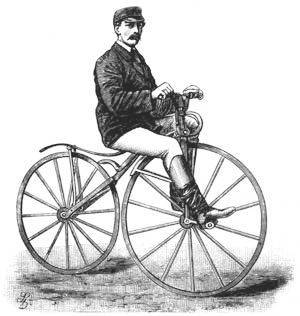James Starley - Inventor and Father of the Bicycle Industry
James Starley is today remembered as one of the most important figures in the early history of bicycle. His exploits, ingenuity and business sense enabled him to become the “father of the bicycle industry” and one of the most successful bicycle inventors and builders of his 19th century. In addition of revolutionizing the bicycle industry with the perfection of chain-driven systems, he also developed first model of differential gear that became cornerstone of the automobile drive system.
Starley was born on April 21st 1831 in Albourne, West Sussex, United Kingdom, as a son of the farmer. In his youth he ran away from home, became apprentice and gardener, and managed to distinguish himself from the young age by repairing watches, machines and creating new interesting devices. This attracted attention of his employer John Penn who introduced James Starley to one of the partners of Newton, Wilson and Company whose typing machine Straley managed to repair without much efforts. By 1861, James Starley and Josiah Turner created their own factory for production of sewing machines - Coventry Sewing Machine Company in Coventry. Just 7 years later, Straley came in possession of Boneshaker velocipede created in France by Michaux Copany. Soon after Straley started producing his own bicycle designs, which promoted Coventry as the center of the British bicycle industry.
Bicycle models created by Starley quickly morphed into penny-farthing designs that featured much larger front wheel than the back one. This improved the abbility for driving on more uneven terrains, but added more danger during fall or dismounting. The most famous penny-farthing design Starley created was Ariel, which had wire-spoked wheels, all-metal frame and was much lighter and easier to drive than French boneshakers.
After death of James Starley in 1981, his sons continued to produce bicycles. However the most famous successor of James Starley’s legacy was his nephew John Kemp Starley who managed to again revolutionize the history of bicycles by creating first Rover “safety bicycle” that had now standardized diamond frame, chain drive, and 26-inch wheels.
